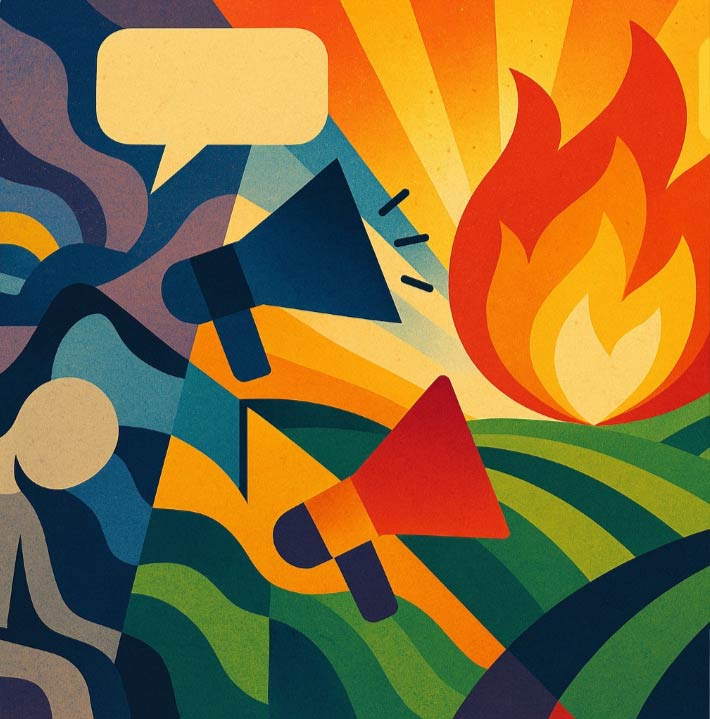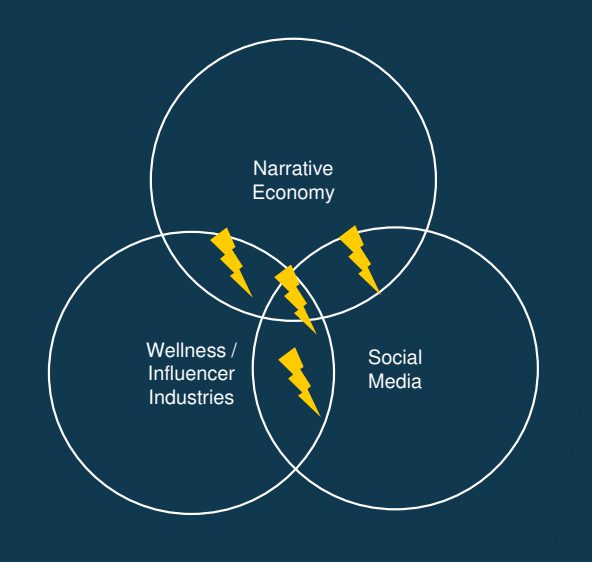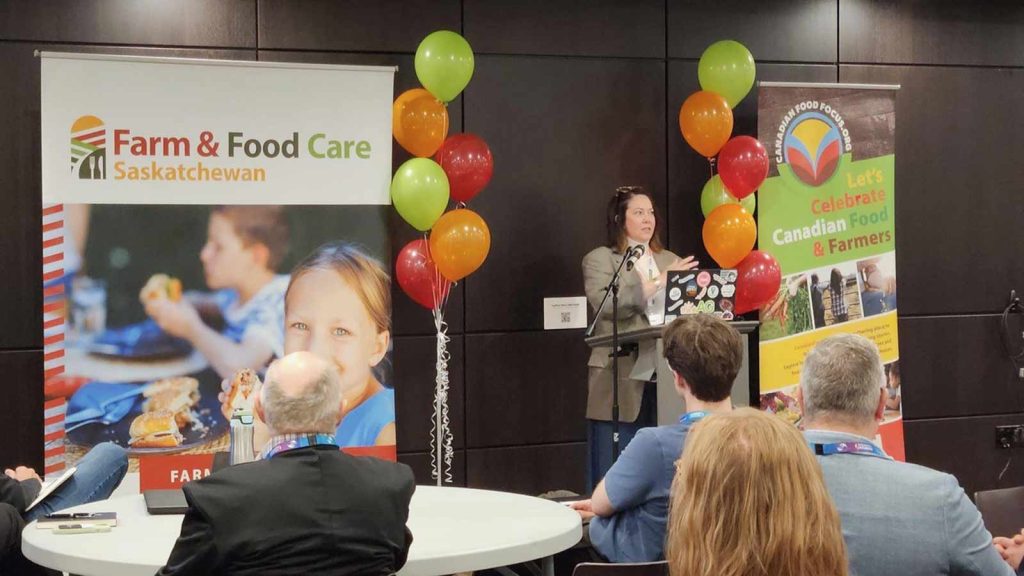At an event to celebrate Agriculture Week in the province, Farm & Food Care Saskatchewan was pleased to welcome Dr. Cami Ryan, well-known ag advocate and Senior Business Partner for Industry Affairs and Sustainability at Bayer Crop Science Canada.
Speaking mainly to an audience of agriculture communicators in Saskatchewan, Ryan’s presentation was entitled “From Fatigue to Fire: Bold Strategies for Communicating Agriculture’s Truths”. She discussed the growing fatigue and dwindling confidence facing the ag sector and the need to tackle these challenges directly and collectively.


It’s a noisy world
Ryan explained that there are three elements driving the current storm of misinformation and disinformation:
- the prevalence of social media in everyday life
- the narrative economy – people respond to storytelling
- the rise of the ‘wellness’ industry and ‘influencer’ economies
Social media is not just a hobby or distraction. As of 2025, more than 5 billion people worldwide are on social media: 63% of the entire planet, with the average person spending almost three hours a day on social media platforms. In North America, usage is even higher, with 3 out of 4 people spending almost five hours a day on platforms like TikTok, Facebook, Instagram, etc.
It’s no wonder communicators are tired. People today have to contend with 20 quintillion bytes of data per day. That is a staggering amount of information to process, and much of it is negative, which adds to fatigue. “We humans are not built to think critically. So negative stuff is easier to believe. The bad stuff often rises to the top,” Ryan said.
It’s important to remember that misinformation and disinformation are products with markets in the billions of dollars. Adding to this, agriculture is easy to problematize – especially when most people are geographically and generationally removed from the farm.
“False experts compete for our vocational knowledge and scientific expertise and they use combined elements of the narrative economy and social media channels to mobilize and sell products,” Ryan said.
Human beings are hard-wired to respond stories. “Stories are sticky. The brain retains stories more than it retains facts.”
This is why it is important for scientists and ag communicators to become good at storytelling.

Moving “beyond the box” –not just outside of it
Ryan went on to share some steps that communicators can take to reshape the narrative around agriculture into one that embodies the strength and resilience of the sector.
1. Find sustainable communication strategies.
This is difficult and draining work. As communicators, we need to pursue practices that allow us to continue engaging over the long haul. For Ryan, that means putting kindness and graciousness first—and reserving sarcasm “in the event of emergency only”. It also means building in time to pause and reflect. And it means keeping a focus on key stakeholders, not trying to be everything to everyone.
2. Embrace diverse perspectives.
We need to open ourselves to different ways of thinking across all different vocations. “Cultivate your own curiosity,” Ryan stated. “Ask questions and then ask more when things get a bit heated. Be willing to change your mind about the important things.”
Ag communicators can actively seek out ways to more formally connect and collaborate with people from different viewpoints. This might involve inviting a medical toxicologist to speak at an event, including dietitians on a farm tour, coauthoring a blog post with a medical doctor, or inviting a guest speaker to a board meeting. “I like to think of this as bringing unexpected people to unexpected spaces,” Ryan said.
3. ‘Hire a theatre kid’.
Referencing comments from entertainer Josh Groban, ‘hire a theatre kid’ is Ryan’s shorthand for need for the ag sector to rethink how we hire and who we hire. This relates to the previous point about seeking out diverse perspectives. By actively looking to hire people that don’t think in same way that the ag sector has approached things in the past, ‘theatre kids’ and other creatives can not only come up with different communications strategies, but also expand organizations’ knowledge to keep pace with the rapidly evolving internet.
4. Find ways to leverage AI.
“AI is a tool we need to befriend, get to know, and find ways to use in our industry – especially for our communication strategies,” Ryan pointed out. She listed several practical uses of AI, such as improving on grammar and spelling; finding definitions, quotes or authors; creating graphics or images; testing out creative ways to communicate to different audiences; and helping to find words to respond calmly to critics and trolls.
Ryan also spoke of how she uses AI to explore how activists think. “As I see it, AI tools are a way to get inside the mind of an influencer or an activist to better understand other ways of seeing the world. It can show us where the gaps in communication are. And it can help us anticipate what might be coming next across a number of issues.”
Ryan’s presentation was part of an event to celebrate Agriculture Week in Saskatchewan. More details about AgWeek in Saskatchewan are available here: farmfoodcaresk.org/events-and-programs/ag-week/.
